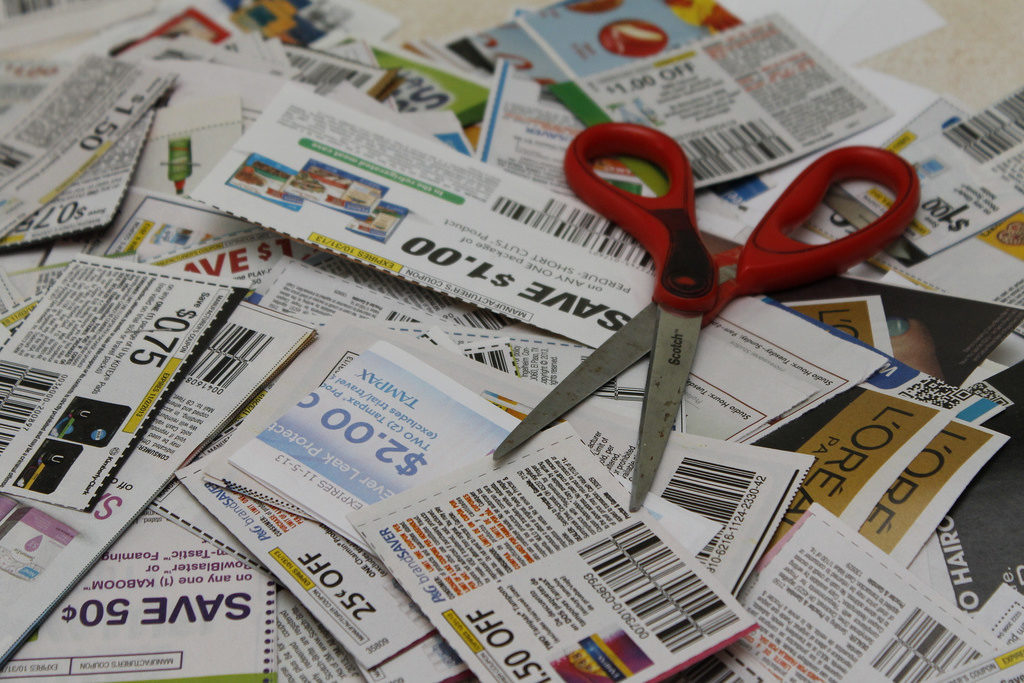Back in 1975, the U.S. economy was slowly emerging from the most severe recession since World War II. The unemployment rate reached its highest level since the Great Depression. Economic growth was sluggish, inflation was rampant, and cash-strapped shoppers used a then-record 2 billion coupons to save money on their groceries.
Four decades later, 2 billion coupons isn’t such an impressive number anymore. Coupons are everywhere these days, in a variety of formats that previous generations couldn’t even have imagined. With printable, digital, mobile and good-old fashioned newspaper insert coupons available, coupons are easier to find and easier to use than ever before.
So it’s noteworthy, and perhaps a little worrisome to those who use and offer coupons, that we only redeemed about as many coupons last year as shoppers did in 1975 – even though there are exponentially more coupons available to us than there were back then.
According to Inmar’s latest Promotion Industry Analysis, 2.07 billion coupons were redeemed in 2017, down a disquieting 9.2% from the previous year. It’s a continuation of a steady decline that began after the “extreme couponing” phenomenon had passed its peak in 2011, when 3.5 billion coupons were redeemed. And that was still fewer than half as many coupons as the 7.9 billion that were used in 1992, the largest number ever.
So as coupon use sinks to yet another 40+ year low, with no sign of hitting bottom just yet, could couponing itself be past its prime?
Inmar Chairman and CEO David Mounts says not to worry. “The strong economy is showing characteristics of past cycles,” he told Coupons in the News. That is, when the economy improves, coupon use generally falls – and vice versa. “While promotion investments are resulting in lower redemption rates, we are still experiencing strong awareness and ROI,” he said.
And the low redemption rate is not for lack of trying by coupon issuers – because coupons, for the most part, have been getting better lately.
Inmar’s annual analysis examines all manner of facts and figures relating to coupons both offered and redeemed. Inmar found that 302 billion coupons were distributed last year, which is a lot, though it’s the lowest number in a decade. As usual, the vast majority – nearly 91% – were insert coupons, while digital coupons represented just 1% of the total, and printables were a mere third of one percent of all coupons available.
When it comes to the types of coupons actually redeemed, insert coupons’ share held steady at about a third of the total, and printables held their position at 3.5%. But the real story involves digital coupons. Digital’s share of all coupons redeemed soared to 11%, up from just 3% the previous year. And for the first time, a corresponding survey of coupon users found that more of them reported using digital coupons last year (45%) than insert coupons (42%).
Digital coupons are “what shoppers are wanting,” Inmar said. These days, “offers have to be targeted and meet the expectations of the shopper.” Paper coupons don’t do that, but “digital does, which is why it’s growing.”
Overall, coupon values were up last year. The average face value of all types of coupons was $1.77, a new high. The face value per item also grew, since the average purchase requirement was also down slightly. Once again, digital led the pack with the highest rise in face values – up to $1.81 from $1.31 the previous year. And printables’ value saw a steep decline – their average face value of $1.53 was the lowest since 2011.
No matter what type of coupons you use, saving money on food is still becoming more difficult. Food coupons’ share of the total number of coupons distributed fell to just 29.3%, a new low. Couponers who need to feed their families have steadfastly redeemed a greater share of food coupons than the share of those distributed, suggesting that there’s a greater demand for them than coupon issuers would have you believe. But for the first time last year, the percentage of food coupons redeemed fell below 50%, to just 49.2%, which means we’re finally giving in and using more nonfood coupons, which continue to represent an ever-larger share of the coupons offered.
It all raises the question – who’s driving these changes? Are coupon issuers adjusting the value and the types of their offers in order to give the people what they want, or are couponers just resigned to using what’s made available to them, if they’re using coupons at all? The declining overall number of coupons used would suggest the latter.
On the flip side, digital coupons have long represented a tiny percentage of coupons used, despite the fact that they’ve been promoted heavily to an apparently skeptical public. But now, digital coupons’ breakout year suggests that couponers are the ones demanding them, and coupon issuers who are increasingly offering digital discounts are simply meeting that demand.
2017 “will be remembered for a long time as the point when many shoppers absolutely shifted to a pure digital preference and rejected the inconvenience of printing coupons,” Mounts said. “This is good news for shoppers, retailers, and brands as it is the inflection that makes personalization and real time engagement possible.”
2.07 billion coupons redeemed may not be much, compared to past years. But that’s still a lot of coupons. So don’t count them out as a marketing tactic, because they’re still plenty popular. Inmar found that 88% of shoppers have used a coupon within the past three months. And 83% of couponers said coupons influence their shopping behavior, prompting them to make an otherwise unplanned purchase.
So if you’ve been clipping fewer coupons than you used to, you’re not alone. But keep an eye on the types and values of the coupons you see in the year to come. They could help determine whether the coupon redemption rate continues to decline to disco-era levels – or whether coupons are due for a digital-era comeback.















I use electronic coupons more, mostly because Red Plum stopped providing coupon inserts in the Sunday paper in Phoenix AZ. It isn’t worth spending $2 on the Sunday paper when we only get Smart Source now.
Arnold, are you able to print coupons from the RedPlum website?
somehow, i don’t think printable coupons are ready to be written off just yet – a lot of us over a certain age (50-plus) would rather use them than the digital stuff… 🙂